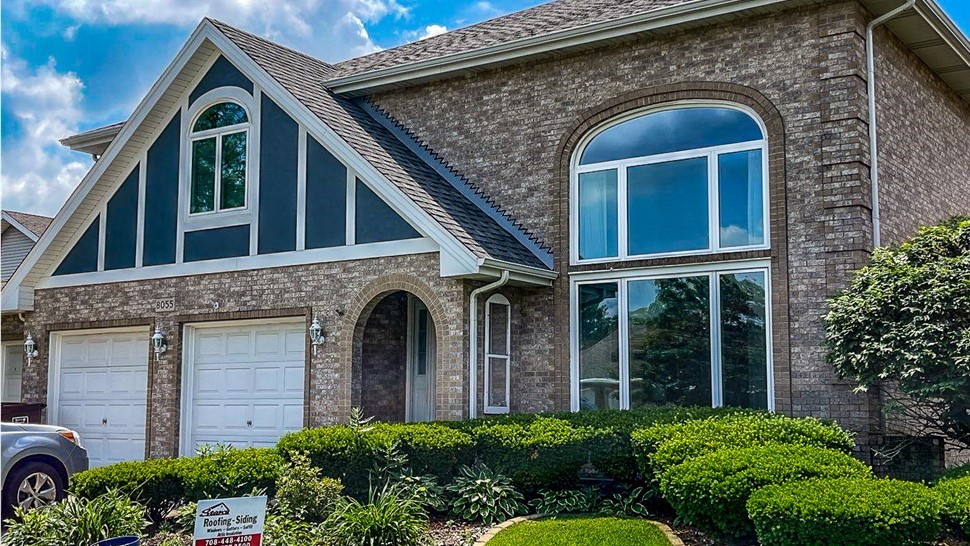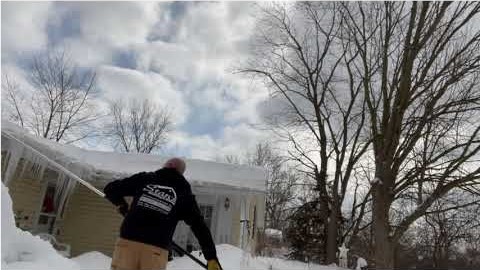You may save money now, but how much will you pay in the long run?
The use of subcontractors in the shingle roofing industry is pretty standard. There are three main reasons for this, and each reason impacts the three parties of a roofing project in different ways. The three reasons are: workers compensation insurance, poor workmanship/damage claims, and steady employment. The three parties of a roofing project are: the contractor, the homeowner, and the subcontractor. For a company with no claims, workers compensation insurance costs about 33% of total wages paid to roofers. Lets look at a “typical” low pitch roof that can easily be walked on. If the cost to the homeowner is $6,000, the labor portion is about $1,800. Workers comp. insurance is an additional $594. If the contractor uses subcontractors, he doesn’t pay workers comp. and can cut $594 off the bid. Who will the homeowner go with, the company that subcontracts or the company that doesn’t? All else being equal the homeowner goes with the lower price and thinks the non-subcontracting company is trying to cheat them.
The state of Illinios requires all companies to have workers compensation insurance if they have 3 or more part time employees at one time, or if they have one or more employees that work at least 35 hours a week. A sole proprietor with no employees is not subject to the workers compensation laws. Insurance companies make sure that sole proprietors are excluded from coverage. They don’t want people getting insurance then “accidentally” getting hurt, leaving the insurance company to pay a big claim. This is certainly understandable and other insurance can be purchased to protect the sole proprietor (like disability and health). A roofing contractor will typically have workers compensation insurance to cover their office and sales people, but if they subcontract the roofing portion, their insurance premiums are significantly lower. This means that the contractor can give the homeowner a certificate of insurance showing that they have workers compensation insurance. But certificates of insurance don’t show who is covered, so homeowners don’t know that the insurance does not cover the roofers. It would cover the roofers, except that the roofers work for a different company (the subcontractor). It is this other company that needs a workers compensation policy to cover their roofers.
Because the workers comp. premiums are so high, the subs in turn subcontract out their labor. By the time it gets down to it, everyone on the roof is a sole proprietor with no employees. All of whom are exempt from the workers compensation laws, and therefore have no insurance. Usually, thank goodness, nobody gets hurt. Getting hurt is a chance roofer’s take, it comes with the territory and everyone knows it. Just like going skiing or playing football, you can get hurt, and you know can get hurt when you sign up for it.
Contractor’s Position
From the contractor’s position, subbing out the work saves big money that can be passed on to the homeowner, and they can get more jobs. From the homeowners’ point of view, they save big money and think that the roofers are covered. From the subcontractor’s situation, it’s just what needs to be done. The second reason to subcontract, from the roofing contractor’s point of view, is that if there is a claim of poor workmanship, or a leak that causes extensive damage, there is someone else to pass the blame to. If subcontractors are used, then it is their fault and their insurance company that pays. If there is ever a warranty claim, the contractor just goes straight to the subcontractor for relief. Sure, the contractor gets embarrassed when the homeowner discovers that he subbed out the work, but by this time the homeowner is already angry and any chance for referrals is gone.
Sub-Contractor’s Position
From the subcontractors perspective, this arrangement works well too. The subcontractors don’t have to worry about advertising or getting jobs; they just go to the large advertising/subcontracting shops and get the work. The homeowners think they are hiring the “large” companies and that the sub is one of their many regular crews. The responsibility of the job is totally on the contractor. The sub can just install shingles, and whatever else is on the work order, and move on. There is no pressure like there
would be if the subcontractor had to make the effort to get jobs and referrals from the homeowners. Subcontractors are anonymous and have no need for referrals. They also tend to move around to different contractors quickly. This is what homeowners really need to worry about from this arrangement. Since the subcontractors are anonymous, they are free. Free to perform to whatever standards they want. Every house is unique. It doesn’t matter what type of subdivision or standard plan there is, the house was built by different people on different days during different weather, it has had different owners, sits on different sides of the street, and ages differently. Different things need to be done to different houses. One might need attic baffles, one might need bird blocks removed, one might need wood replacement, one might need flashing installed to prevent not only rain from getting in, but also flashing in the same spot to prevent leaks from the snow that piles up on that section of the roof in the winter. You don’t know what you will find until you get into the job. If the roofer doesn’t take the time to investigate, he can’t do the work properly. If there is an anonymous subcontractor on the job, and nothing is in the work order (which there can’t be because the problem can’t be seen until it is uncovered), it is all too easy to just cover it up and move on. It can take a lot of time to uncover and fix problems. Most of the time the roofer doesn’t get paid to do it. It just costs him time and money. Finding the problems pays in referrals, no callbacks, and personal satisfaction. Anonymous subs don’t get callbacks or referrals. This can even be taken a step farther when you are dealing with those companies that claim to be able to do the job in one day. It is nice for the homeowner not to be inconvenienced for more than a day, but roofing is a major job. When a contractor puts 15 roofers on a job and pressures them to be done in a day or less, what happens if they find something wrong? Can they allow 13 people to stand around while 2 people fix a problem? Can the subs even take the time if they wanted to?
The third reason subcontractors are used is due to steady employment, or the lack thereof. A “large” company that advertises heavily, uses subcontractors, and has a good sales force can get lots of work. This type of organization can pay less than other companies because the roofers can be steadily employed. This is a double-edged sword to the subcontractors. They get to work, but they are undervalued and can be easily replaced by the next hungry guy in line. This argument in favor of subcontractors is really almost a business model. The contractor advertises heavily. He subs out the work so he doesn’t have to pay workers comp. insurance. He does lots of jobs so he pays less for the materials and dump fees, as well as the labor to install the jobs. This business model also makes it profitable to use lower quality materials. Even though he is paying less for the same quality materials, this contractor will make more money if he pays even less for the less quality materials. To a company that installs a relatively small number of jobs, it doesn’t make sense to use low quality materials to save a couple thousand dollars a year, but if you’re talking about a hundred thousand dollars a year the temptation is a bit stronger.
Homeowner’s Position
Homeowners benefit from this model through lower prices, but they risk having disgruntled, underpaid crews on their roof and lower quality materials. If someone gets hurt, they can be open for a lawsuit from a “sub-contractor” that is not properly insured. A few tell tale signs that subs are being used; blank trucks or vans. In IL all contractors have to have there business name clearly on their vehicles, even if it is a sub, they have to have their company name or the contractors. 10 plus workers on a crew. They have to get the job done in a day, as mentioned previously, this is not good work for your house. Material on the ground (driveway), if the material can be lifted up to the roof (if the roof is walkable) why would I place the material on your driveway and possibly have one of my employees hurt their back. Yes, some roofs do not allow us to have the shingles placed on the roof due to it’s pitch.
Tags
Subscribe to Stan's Roofing & Siding's Blog








Comments